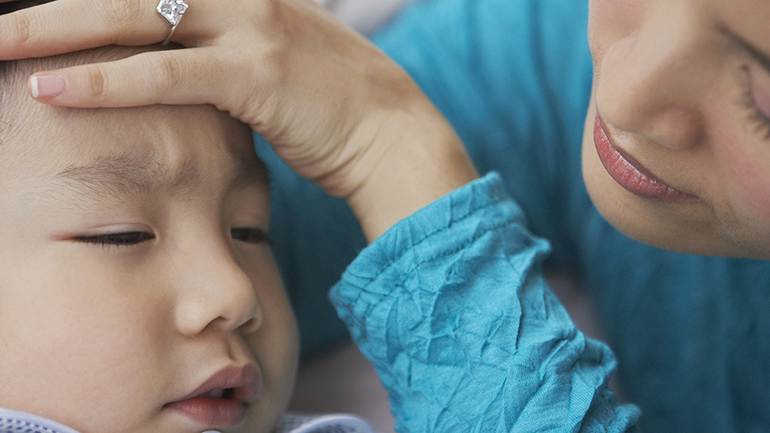
Here's what to look for so you can stay calm and help your child feel better – without rushing to the ER.
Fevers in children can be a cause of significant anxiety and stress in parents. The concern stems from not knowing the cause of the fever, not knowing what to do and worrying that there may be something serious going on with their child. While this can be distressing, most fevers do not require a trip to your doctor or the emergency room.
Read on to know when to worry and what actions you can take to help your child.
When to worry about a fever
Children with a fever that should be urgently assessed by your family doctor or an emergency physician include:
- Babies under three months with a fever. They can get very sick quickly and require an aggressive approach to investigate the underlying cause.
- Children who experience seizures due to a rapid increase in temperatures
- Children with a fever for more than three days
- Children whose temperature repeatedly rises above 40°C
- Children with a known chronic medical condition
- Children with a new rash
- Children who are clearly quite unwell – lethargic, listless, rapid breathing, not drinking, poor interaction, inconsolable
If you’re unsure if your child needs to be seen by a doctor, you can start by calling the Fraser Health Virtual Care team at 1-800-314-0999 or HealthLinkBC at 8-1-1.
What temperature is considered a fever?
Any temperature above 38°C is considered a fever.
Parents need to know that a fever is a symptom and not a disease. A fever is a healthy, physiological reaction to an often minor infection or other illness. Only on rare occasions can a fever be one of the signs of something more serious.
What is the most common cause of fever in children?
The most common cause of fever in children is an infection. The infection can be caused by a virus (more common) or by a bacteria. A virus-related fever in children can be caused by the common cold, the flu, COVID-19, bronchiolitis or croup. The best way to prevent flu or COVID-19 is by getting vaccinated.
Are fevers dangerous?
The most important thing for parents to know is that a fever in a healthy child is usually not dangerous. With a high temperature, a child will feel unwell. They may have decreased appetite, be a little more fussy than usual and play less, but the fever will typically go away on its own in three to four days.
How can I help my child feel better?
Make sure they remain adequately hydrated, even if it’s just sips of water or formula or more frequent breastfeeding. It is also important for them to rest. Using medications such as children’s acetaminophen (Tylenol) and children’s ibuprofen (Advil and Motrin) can help make them feel better. The right dosage depends on the age and weight of the child. However, these medications are not always necessary.
What is the best way to take my child’s temperature?
The most accurate way to take a temperature is to use a rectal thermometer. You can also take a temperature from the armpit, mouth or ear. Remember that the number is not as important as the symptoms. Learn more about how to take a temperature.
When should antibiotics be used?
Typically, fevers are a symptom of viral infection and therefore will not benefit from antibiotics. Less commonly, a fever can be caused by a bacterial infection, such as ear infections, bladder infections and pneumonia. Antibiotics can play a role in treatment for these kinds of infections. When a child has specific symptoms (such as ear ache or bladder symptoms) along with the fever, this child should be seen by the family physician for assessment. To learn about more about health care options, especially during the busy winter months, visit Use the ER wisely – choose the right care at the right place.


